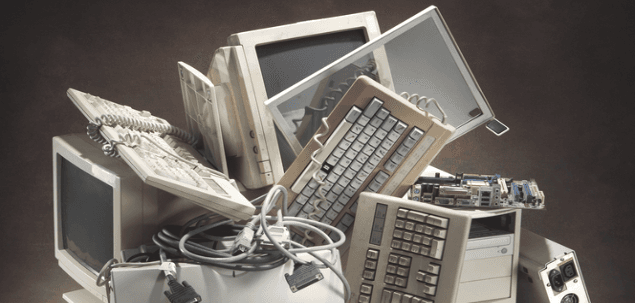A full-page newspaper advert for US electronics retail giant Radio Shack from 1991 is a great reminder of how much the way we do business has changed forever.
This advert featured 15 pieces of technology that would have set you back $3000, or $5300 with today’s US dollar valuation, and might just have squeezed into in the boot of a family car. For your hard earned bucks you’d have got a PC, camcorder, mobile phone, clock radio, portable CD player, desktop scanner and more.
What is truly astounding is all of that technology is available in a small handheld device that you can buy for as little as $200 ($120 in 1991 which wouldn’t even have bought a mobile phone). It’s possible you are reading this article on one of those devices. We are of course speaking about smartphones.
In just 25 years we have gone from the start up-cost of equipment alone being $3000 for a small business to practically nothing when you consider most people already own a smartphone. These devices are powerful enough to run an entire business if you want to and they definitely pack more processing power and memory than your average PC from 1991.
Work collaboration has been revolutionised by the smartphone – thanks to the advent of apps, prohibitively expensive standardised equipment is a thing of the past. Clients, colleagues and associates from across the globe can just as easily dial into a video conference on a $50 phone as from a $10000 conferencing suite. Accessing files from the cloud in a meeting and being able to project them on demand means you’ll never be unprepared or risk losing a pitch because a vital piece of information was left on the printer.
Technology is a great leveller and, through the power of a lithium powered device costing a few hundred bucks, the innovators and entrepreneurs of the future can operate almost as successfully as an established business. Low cost accounting, administration and productivity software does everything a start-up needs and as cash flow is the killer of most new ventures, having low overheads gives those fledgling businesses a better chance of thriving.
For businesses with field executives, smartphones are a godsend. Economical and easily replaced, smartphones are saving businesses with field reps thousands of dollars per head and reducing security risks. A smartphone is computer, communication device and satnav all in one and as everything can be instantly backed up to the cloud and wiped remotely, downtime or exposure should the device be lost or stolen is negligible.
Multitasking, productivity and motivation has and can be improved by mobile devices. The freedom to work anywhere mean we can now reply to emails, write a to-do-list and put the finishing touches to a presentation on the commute to or from the office. There’s no more rushing to the office for emergencies, wasting valuable time driving in, because when something urgent pops up you just swipe open your smartphone and set to it. Holidays are no longer a worry – a few taps on a screen and any problems can be avoided or critical situations discussed with minimal disruption to your vacation. This also helps avoid that post-holiday stress you get when you return to a desk full of problems that accumulated whilst you were away.
Smartphones, the Internet, social media and digital marketing have all contributed to an untrammelled modern work environment that drives growth and enhances productivity. You book transport and accommodation; speak to colleagues or clients ‘face-to-face’ across the globe; order stock for same or next day delivery; manage invoices and finances; use email and interact with customers via social media; share files and collaborate with colleagues and much more all with just one handheld, intuitive device. You can even pay with your mobile device in stores and online so forgetting your wallet isn’t the headache it once was!
The change we have seen over the last twenty or so years should give us hope for the future of business. The humble smartphone has changed the way we do business for the better and continues to offer businesses, both new and old, exciting new ways to collaborate and thrive.
About the author
Maria Bellissimo-Magrin is the CEO of full-service creative marketing agency Belgrin.

